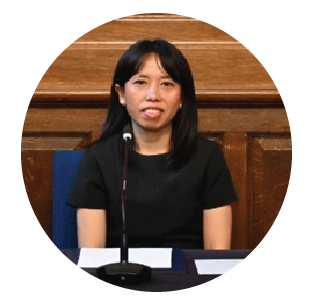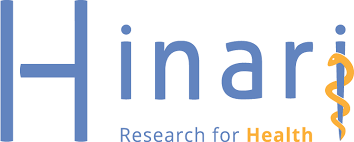FABRICATION TECHNIQUE OF DENTAL RESTORATION USING HYBRID CERAMIC WITH CAD CAM METHOD
Downloads
Background: Ceramic is superior in aesthetic but fragile and breakable under bite pressure . Lack of understanding of material requirements for resistance in the oral cavity and minimal ceramic processing techniques is the initial cause of the failure. Hybrid ceramic dental restoration is a material that combines the good properties of ceramics and composites that have elasticity and ensures high strength and minimize the wall thickness of the restoration. Mechanical manufacture of dental restorations currently growing, CAD CAM systems are becoming popular in the field of dentistry. CAD CAM provides the advantage that the effectiveness of the time, does not require a lot of human resources, and produce a restoration with good quality. Purpose: To explain hybrid ceramic material and techniques of making hybrid ceramic dental restorations with CAD CAM system. Review: Hybrid ceramic is a material that combines the advantages of ceramics and composite elasticity. This material contains a hybrid structure with two networks, ceramic and polymer are linked to each other, known as double hybrid network. It added that the structure of the ceramic feldspathic network (86% wt) is reinforced by a polymer network (14% wt) are integrated as a polymer network filling cavities that exist in the network and make its structure ceramic hybrid ceramic material becomes denser. Conclusion: Hybrid ceramic having chewing load capacity and high elasticity, flexural strength 150-160 Mpa and fracture toughness 1.5 Mpa, higher than conventional ceramics. Mechanical manufacture of dental restorations using ceramic hybrid materials with CAD CAM method begins with scanning, selection of materials and tooth shade, designing, milling, followed by finishing, polishing, ends with staining and glazing.
Alonso, V., Caserio, M.A. 2012. Clinical study of direct composite fullcoverage crowns: long-term results. Oper Dent 37: Pp. 432-41.
Ban, S. 2008. Material science of zirconia and future prospects. Practice in prosthodontics 41: Pp. 85–97.
Barclay, C.W., Walmsley, A.D. 2001. Fixed and removable prosthodontics. 2nd ed. Tottenham: Churchill livingstone; Pp. 115-22.
Beuer, F., Schweiger, J., Edelhoff, D. 2008. Digital dentistry: An Overview of recent developments for CAD/CAM generated restorations. Br Dent J; 204 (9): Pp. 505-11.
Bona, D., Kelly, J.R. 2008. The clinical success of all-ceramic restorations. J Am Dent Assoc; 139(suppl): Pp.8S-13S.
Building a Better Tooth. Available from: www.bu.edu/today/2013/building-a better-tooth. Diakses 23 Maret 2016.
Chan, K.H.S., Mai, Y., Kim, Y., Kim, H., Tong, K.C.T., NG D, Hsiao, J.C.M. 2010. Review: Resin Composite Filling. Materials 3(2) : Pp. 1228-43
Craig, R.G, Powers, J.M., Wataha, J.C. 2000. Dental materials: properties and manipulations. 7th ed. St.Louis: Mosby Inc: Pp. 283-93.
Davidowitz, G., Kotick, P.G. 2011. The use of CAD/CAM in dentistry. Dent Clin North Am;55(3): Pp. 559–70.
Dirxen, C., Blunck, U., Preissner, S. 2013. Clinical performance of a new biomimetic double network material. Open Dent J; 7: Pp. 118-22.
Effrosyni, A., Tsitrou, E., Northeast, S., van Noort, R. 2007. Evaluation of the marginal fit of three margin designs of resin composite crowns using CADâ„ CAM. Journal of Dentistry; 35 (1): Pp. 68–73.
Felber, R. 2014. The CAD/ CAM –technology opens new possibilities for the objective evaluation of preparations in the academic training. Journal Digital dentistry in research and science. Ddm Ausgabe 1: Pp.61-7
Kalpana, D., Harish, G., Mahesh, P.C., Swati, S., Madhuri, V., Brunda, K. 2015. CAD CAM in dentistry –A Review. IJRID 5(2) Mar-April: Pp. 14-21.
Klim, J., Corrales, E.B. 2008. Innovation in dentistry: CAD/CAM restorative procedures. A Peer- Reviewed Publication. Available from : www.ineedce.com 2008. Diakses 28 Februari 2016
Miyasaki, T., Hotta, Y., Kunii, J., Soichi, K.S., Tamaki, Y. 2009. A review of dental CAD/CAM: current status and future perspectives from 20 years of experience. Dental Materials Journal 28(1): Pp. 44-56.
Mormann, W.H. 2004. The origin of the Cerec method: a personal review of the first 5 years. Int J Comput Dent; 7(1): Pp.11-24.
Powers, J.M., Sakaguchi, R.L. 2006. Craig's restorative dental materials. 12th ed, Saint Louis: Mosby: Pp. 514-6.
Raghavan, R.N. 2016. Ceramics in Dentistry. Intech open science/open minds 2004. Available from: www.intechopen.com. Diakses 6 January 2016.
Reich, S., Wichmann, M., Nkenke, E., Proeschel, P. 2005. Clinical fit of all-ceramic three-unit fixed partial dentures, generated with three different CAD/CAM systems. Eur J Oral Sci; 113 (2): Pp. 174-9.
Rizkalla, A.S., Jones, D.W. 2004. Mechanical properties of commercial high strength ceramic core materials. Elsevier Dent Mater; 20(2): Pp. 207-12.
Strub, J.R., Rekow, E.D., Witkowski, S. 2006. Computer-aided design and fabrication of dental restorations: current systems and future possibilities. JADA; 137(9): Pp. 1289-96.
Uzun, G. 2008. An overview of dental CAD/CAM systems. Biotechnol & Biotechnol Eq. 2008; 22(1): Pp. 530-35.
Vita Enamic. 2016. Working instructions. VITA Zahnfabrik H. Rauter GmbH & Co.KG. Available from: www.vita zahnfabrick.com. Diakses: 30 January 2016
Copyright (c) 2017 Journal Of Vocational Health Studies

This work is licensed under a Creative Commons Attribution-NonCommercial-ShareAlike 4.0 International License.
- The authors agree to transfer the transfer copyright of the article to the Journal of Vocational Health Studies (JVHS) effective if and when the paper is accepted for publication.
- Legal formal aspect of journal publication accessibility refers to Creative Commons Attribution-NonCommercial-ShareAlike (CC BY-NC-SA), implies that publication can be used for non-commercial purposes in its original form.
- Every publications (printed/electronic) are open access for educational purposes, research, and library. Other that the aims mentioned above, editorial board is not responsible for copyright violation.
Journal of Vocational Health Studies is licensed under a Creative Commons Attribution-NonCommercial-ShareAlike 4.0 International License














































